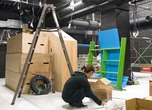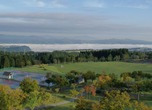
Posted: 火 4 20 2010
Since going mainstream as a music genre in the early 1970s, reggae, the quintessentially Jamaican musical style, has gone on to be both embraced and reinterpreted all over the world.
Cities such as Yokohama and Osaka are well known in the Japanese reggae scene; however, Tokyo too has its fair share of reggae. Since Bob Marley himself came to Tokyo in 1979 to perform reggae for the Japanese public, reggae music continued to gradually increase in popularity.
During the 00s, Japanese dancehall reggae artists from all over Japan started rapidly gaining recognition and performing in Shibuya clubs such as Club Asia and AMATE-RAXI. This saw the Tokyo reggae scene skyrocket and tickets for the reggae club nights – which were held just about every day of the week – repeatedly sold out. Reggae parties with capacities in the tens of thousands were held, and Tokyo became a place that – in terms of excitement – could probably have given Jamaican reggae fans a run for their money.
Dancehall reggae first started to become popular in Tokyo in the early 90s. Until then, although there were various clubs and artists performing reggae, the scene was still very much an underground movement. However, as the 90s progressed, reggae continued to steadily became more popular until, in the 00s, the style exploded into the Japanese mainstream music scene.
Chronicling the huge success of Tokyo’s dancehall reggae scene in is a new Japanese-language book, which hit bookshops on April 10, entitled ‘Kanto Raggamuffin’. The investigative work traces the history of the Japanese reggae scene through the 80s and 90s, and collates testimonies from leading dancehall artists such as Rankin Taxi and Boy-Ken. The book not only covers the Tokyo reggae scene but also introduces the reggae scene in places such as Yokohama and Shonan.
As the book’s author, it may be slightly self-congratulating to say so, however, ‘Kanto Raggamuffin’ recounts some particularly interesting episodes and provides enough information to make it a comprehensive source for anyone interested in learning more about the roots of the dancehall scene in Japan. In addition to introducing the Tokyo club scene from the perspective of dancehall, the book could also be considered as the go-to book for those looking for an insight into some of the history behind Japan’s modern youth culture.
No matter how informative a book might be, to experience the real reggae scene you have to get out and party with the crowd; find that crows at some of the best reggae spots in Tokyo.
Club Jamaica
Open every night of the week, and located just a short walk from Roppongi, Club Jamaica boasts a history that dates back to 1987, and attracts a wide variety of people looking to have a good time. It’s also the type of club where the club’s organizers and staff, both young and old, often mingle and party with the crowd. One of the main features of the club is its giant sound system, which takes up almost an entire wall of the club. From the latest dancehall to reggae from the 70s, 80s and 90s, the music here should be enough to satisfy just about any Jamaican music fan.
(Full details & map)
Club Cactus
Opened in 2006 by Hemo+Moofire – a female reggae duo who perform regularly both in Japan and overseas – Club Cactus will celebrate its fourth anniversary this year in May. The club, which is entirely designed by the two girls, makes for a friendly environment where patrons can learn more about, and even meet Hemo+Moofire in person. In addition to playing some of the most recent dancehall, the club also hosts lively parties that play Soca-style carnival music from Trinidad and Tobago.
(Full details & map)
Open
Located in Shinjuku, not far from another reggae club, Garam, this small-scale reggae club is open nightly, and is the place to go for genres such as roots and dub. A well-established Tokyo reggae club that often hosts live events, Open provides an enjoyable atmosphere and has a huge sound system that’s more than capable of kicking out a good level of bass.
(Full details & map)
Rockers Island
Rockers Island, a record shop in Shibuya, is a cornerstone of Tokyo’s reggae scene, and a gathering place for reggae lovers. The shop stocks music from both international and Japanese artists, with an extensive range of 7-inch vinyls, and music that ranges from the latest singles to well-known favourites. Across the street from Rockers Island is another well known record shop, Coco-Isle Music Market, who, in addition to stocking a wide variety of Jamaican music, including vintage reggae singles, also carry music from various other islands, such as Hawaii.
(Full details & map)
Related product
Tweets
- About Us |
- Work for Time Out |
- Send us info |
- Advertising |
- Mobile edition |
- Terms & Conditions |
- Privacy policy |
- Contact Us
Copyright © 2014 Time Out Tokyo














Add your comment